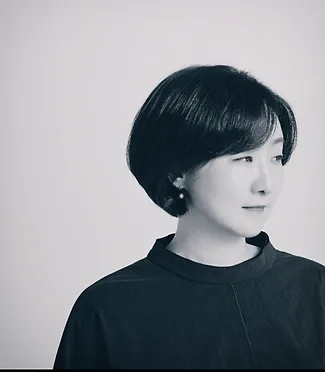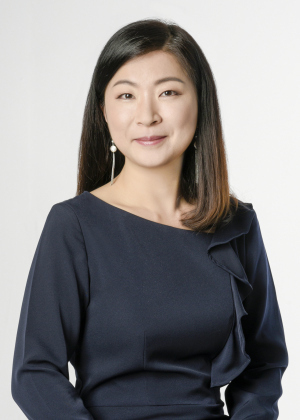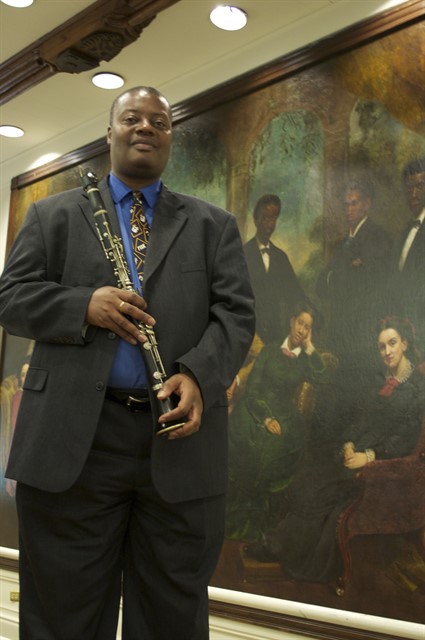From Intersection
A Lenten Concert from Intersection

On Saturday, March 23, Nashville’s contemporary music ensemble Intersection presented a concert titled Thin Places at the Trinity Presbyterian Church. The title of the program refers to “places described in Celtic spirituality where the space between heaven and earth is thinner, or in more secular terms, they are spaces that invite us to connect with things beyond ourselves.” Given the absence of anything Celtic, the setting (a church), the Lenten season, and the fact that the concert opened and closed with overtly Christian expressions of the “timeless imagery of the Resurrection,” the concert title felt like an awkward expression of modern Christian Syncretism. That said, the pieces themselves reflected a masterful collection of 21st Century compositional techniques composed and performed in an authentically meaningful way.
The evening opened with Shinuh Lee’s Choral Fantasy No. 4 for piano, written for soloist Jihye Chang’s Continuum 88 Series. The Fantasy was inspired by Martin Luther’s Ein Feste Burg melody, which was treated in a remarkable process of developing variation. This was performed with excellent clarity by the internationally acclaimed Chang. Lee’s description in the program states that, in composing this work, she employed parameters of limited harmonies, rhythm, and texture to emphasize the horizontal and vertical density of the piano to “express the spirit of the religious revolution that happened 500 years ago.” She was quite successful at this expression. The piece, given these parameters, was reminiscent of the minimalist musical movement, and it clearly embraced the violence of the Reformation but still managed to end beautifully in a victorious yet unresolved way.

However, at least to me, the piece was very discomforting. This melody, often described as the Marseillaise of the Reformation, has a history directly connected to the patriotism and nationalist elements of the movement in Germany, and has even been described as a battle anthem of the Thirty Years War by the Lutheran sect of Protestantism. Giacomo Meyerbeer employed it in his opera Les Huguenots as a leitmotiv that expresses, in turn, the aggression, faith and finally suffering of Protestants during the St. Bartholomew’s Day Massacre. In Lee’s work, from this perspective, I sensed some measure of the naïveté of faith (naïve, not because of faith in a higher power, but because of the perception of righteousness behind any violence committed on behalf of that faith). Perhaps this was made worse by the fact that the very night of the concert, several instances of religious extremist terrorism filled the front page of the New York Times (both above and beneath the fold).
The second piece, also written for Chang, was SILVER BELLS! By Sungji Hong. Another solo piece for the piano and based on the first section of the famous symbolist poem The Bells, by Edgar Allen Poe. The wide voicing of Hong’s bells, in a bright, sparkling consonance, seemed influenced by Debussy’s Cathedral and Scriabin’s Flame…at once. It was a beautiful performance that brought us into intermission on a wonderful note.
The second half of the concert opened with a sinfonietta onstage to perform Gary Powell Nash’s Look for the Helpers. This work, inspired by the shootings that occurred in Nashville and East Lansing in 2023, referred to the famous quote from Fred Rogers: “When I was a boy and I would see scary things in the news, by mother would say to me, ‘Look for the helpers. You will always find people who are helping.’”
A number of Nash’s compositional decisions were made on the basis of numbers derived from the number of victims in the events, as well as the rhythm created by the phrase “look for the helpers” and formally organized in Fibonacci proportions. While I rarely know what to do with extra musical parameters in my perception of a musical performance (it is very difficult for me to hear a Fibonacci proportion, for example) the recurring motive on “look for the helpers” had an excellent effect. Its continual occurrence expressed a fact that you just don’t see on the from page of any newspaper, be it the New York Times or the Tennessean–No matter the tragedy, there are always helpers. Kelly Corcoran, Director of Intersection, conducted what seemed to be a rather intricate score quite well, which her characteristic attention to detail and the maintenance of a clear balance of sound throughout.
The last work of the evening, Sungji Hong’s Igerthi for Piano and Sinfonietta was a World Premiere and Commissioned by Intersection. It roughly, in form and expression, is rather similar to a concerto, and somewhat heroic at that, amassed of a programmatic depiction of “the timeless imagery of the Resurrection, depicted in Byzantine icons,” with the title a Greek word for “He has risen.” Yet, the composer invites listeners on a “journey of self-discovery and renewal, transcending religious boundaries to touch upon themes of hope, transformation, and triumph of the human spirit.” I was taken up with the heroic narrative, between the glowing second movement and the dramatic dénouement in the third, the work is stirring. Further, Jihye Chang’s performance, incredible throughout the night, was simply revelatory in this final movement—no wonder that the piece was dedicated to her. It was a wonderful evening of masterfully composed and performed works of the 21st century. Intersection returns May 3rd with “Boundless Beats,” at the Public Library Downtown.



